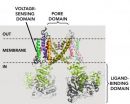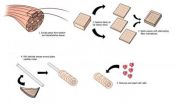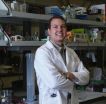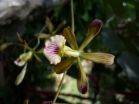(Press-News.org) December 27, 2012, Shenzhen, China - A Chinese research team, led by Beijing Forestry University, BGI, Beijing Lin Fu Ke Yuan Flowers Co., Ltd, and other institutes, has completed the first genomic sequence of Prunus mume, known as mei. This work is extremely important for the deeper understanding of Rosaceae evolution and provides an invaluable resource for the improvement of fruit trees. The latest study was published online today in Nature Communication.
As one of the longest-lived flowering fruit trees, the P. mume was domesticated in China more than 3,000 years ago. It belongs to Rosaceae, the third most economically important plant family in temperate regions, and is characterized by high nutrition, medical value, and tolerance to low temperature in winter. Writers and artists have extolled the beauty of its flowers, and the blossom is considered to be the symbol of Chinese national spirit. The availability of P. mume genome will open a new way for better decoding the mysteries of this fascinating tree.
The plantation technique that makes P. mume so diverse--the artificial grafting--also makes their genomes difficult to assemble. In this study, researchers sequenced the genome of P. mume, a wild species from Tibet in China, using a robust approach integrated with next-generation sequencing (NGS) and whole-genome mapping (WGM) technologies. Then they constructed a high-density genetic map by applying restriction-site-associated DNA (RAD) marker strategy that further improves the quality of the genomic reference. Through all the efforts, researchers yielded the ~237Mb P. mume reference genome.
The poor phylogenetic resolution of the Rosaceae suggests rapid evolution within the family. In this study, the evolutionary analysis of P. mume genome demonstrated that there was no recent whole-genome duplication (WGD) event happened after the differentiation between P. mume and Malus x domestica (apple). However, the triplicated genomic arrangement was found in the P. mume genome by paleo-history analysis in Prunus.
Supported by the genomic data of apple and strawberry (Fragaria vesca), researchers successfully reconstructed nine ancestral chromosomes of Rosaceae family, and analyzed the chromosome fusion, fission and duplication history in three major subfamilies, including genera Prunus, Malus and Fragaria. Through analysis, they hypothesized that at least 11 fissions and 11 fusions occurred in P. mume from the nine common ancestral chromosomes. For apple, at least one WGD and five fusions took place to reach the 17-chromosome structure, compared with 15 fusions for strawberry to affect the 7-chromosome structure.
P. mume is one of the first trees that bloom in early spring, blooming even below 0℃. In this study, researchers investigated the genetic characteristics underlying the mechanisms related to acclimate to cold weather and release itself from dormancy. They found that dormancy-associated MADS-box transcription factors (DAM) family and C-repeat-binding transcription factors (CBF) were two important factors related with flowering dormancy.
As the saying goes, "Plum blossom incense from the cold weather", P. mume always has a special fragrance in winter. To understand its mechanism of floral scent, researchers identified a series genes related to the biosynthesis of volatile compounds, such as benzyl alcohol acetyltransferase (BEAT) gene. They supposed the expansion of the BEAT gene family might increase the content of benzyl acetate and therefore induces the special fragrance of P. mume.
The disease resistance related-genes may benefit the future breeding improvement. In this study, researchers found many related genes expanded tremendously in the P. mume genome, such as leucine-rich repeat receptor-like kinase (LRR-RLK) genes, the nucleotide-binding site-coding resistant gene (NBS-coding R gene), and pathogenesis-related (PR) gene families. It was reported that PR proteins could mediate plant defence against pathogenic constraints and the general adaptation to stressful environments. Most PR gene families in P. mume were expanded notably especially PR10, suggesting their expansion might be related to the response of P. mume to salt, drought and fungal infection in roots and leaves.
Wenbin Chen, Project Manager of BGI, said, "The P. mume genome lays a solid foundation for identification of important economic traits, and provides a valuable resource for P. mume breeding and other Rosaceae species studies. The work here also brings a new approach for further exploring the biosynthesis of floral scent and regulation mechanism of early blooming in endodormancy, and other comparative genomics studies on Rosaceae species."
###
About BGI
BGI was founded in 1999 with the mission of being a premier scientific partner to the global research community. The goal of BGI is to make leading-edge genomic science highly accessible through its investment in infrastructure that leverages the best available technology, economies of scale, and expert bioinformatics resources. BGI, which includes both private non-profit genomic research institutes and sequencing application commercial units, and its affiliates, BGI Americas, headquartered in Cambridge, MA, and BGI Europe, headquartered in Copenhagen, Denmark, have established partnerships and collaborations with leading academic and government research institutions as well as global biotechnology and pharmaceutical companies, supporting a variety of disease, agricultural, environmental, and related applications.
BGI has established a proven track record of excellence, delivering results with high efficiency and accuracy for innovative, high-profile research which has generated over 250 publications in top-tier journals such as Nature and Science. These accomplishments include sequencing one percent of the human genome for the International Human Genome Project, contributing 10 percent to the International Human HapMap Project, carrying out research to combat SARS and German deadly E. coli, playing a key role in the Sino-British Chicken Genome Project, and completing the sequence of the rice genome, the silkworm genome, the first Asian diploid genome, the potato genome, and, most recently, have sequenced the human Gut metagenome, and a significant proportion of the genomes for 1,000 genomes. For more information about BGI please visit www.genomics.cn.
Media Contact:
Bicheng Yang
Public Communication Officer
BGI
86-755-82-639-701
yangbicheng@genomics.cn
www.genomics.cn
The first genome sequence of Chinese plum provides important resource for fruit improvement
Study published online today in Nature Communication
2012-12-28
ELSE PRESS RELEASES FROM THIS DATE:
Students' online and offline social networks can predict course grades -- Ben-Gurion U. researchers
2012-12-28
BEER-SHEVA, Israel, December 27, 2012 -- Ben-Gurion University of the Negev's (BGU) Social Networks Security Research Group in its Department of Information Systems Engineering has developed a novel method to predict how well or badly a student will perform in an academic course.
The information can be used to determine which students need the most help, as well as which ones excel and might be guided to further study or careers in that subject area. The paper, "Predicting Student Exam Scores by Analyzing Social Network Data," was presented earlier this month at the Advanced ...
A model-free way to characterize polymodal ion channel gating
2012-12-28
Two studies in The Journal of General Physiology (JGP) help pave the way for a "shortcut" model-free approach to studying activation of "polymodal" ion channels—channels that open in response to multiple stimuli. Transmembrane ion channels respond to various physiological stimuli to regulate numerous cellular functions. Different classes of channels respond to different types of stimuli; some channels, for instance, respond to changes in membrane potential whereas others are activated by ligand binding. Polymodal channels integrate different cellular signals, enabling them ...
Slice, stack, and roll: A new way to build collagen scaffolds
2012-12-28
MEDFORD/SOMERVILLE, Mass. (December, 26 2012) – Tufts University School of Engineering researchers have developed a novel method for fabricating collagen structures that maintains the collagen's natural strength and fiber structure, making it useful for a number of biomedical applications.
Collagen, the most abundant protein in the body, is widely used to build scaffolds for tissue engineering because it is biocompatible and biodegradable. Collagen is, however, hard to work with in its natural form because it is largely insoluble in water, and common processing techniques ...
GSA Bulletin celebrates GSA's 125th Anniversary with new geologic time scale
2012-12-28
Boulder, Colo., USA – GSA BULLETIN articles posted online between 10 Dec. and 21 Dec. 2012 include a new version of The Geological Society of America's Geologic Time Scale. This paper marks the beginning of a special series of invited papers in celebration of GSA's 125th Anniversary in 2013. Highlights are provided below.
1. A new/revised GSA geologic time scale.
2. Complex mammal fossil record of the Gran Barranca, Patagonia, Argentina.
3. A new and simple method for estimating the rate of sediment delivery to ancient basins.
4. A study of the provenance of volcanic ...
Monkey see, monkey do: Visual feedback is necessary for imitating facial expressions
2012-12-28
Research using new technology shows that our ability to imitate facial expressions depends on learning that occurs through visual feedback.
Studies of the chameleon effect confirm what salespeople, tricksters, and Lotharios have long known: Imitating another person's postures and expressions is an important social lubricant.
But how do we learn to imitate with any accuracy when we can't see our own facial expressions and we can't feel the facial expressions of others?
Richard Cook of City University London, Alan Johnston of University College London, and Cecilia Heyes ...
Strange behavior: New study exposes living cells to synthetic protein
2012-12-28
One approach to understanding components in living organisms is to attempt to create them artificially, using principles of chemistry, engineering and genetics. A suite of powerful techniques—collectively referred to as synthetic biology—have been used to produce self-replicating molecules, artificial pathways in living systems and organisms bearing synthetic genomes.
In a new twist, John Chaput, a researcher at Arizona State University's Biodesign Institute and colleagues at the Department of Pharmacology, Midwestern University, Glendale, AZ have fabricated an artificial ...
Penn team developing new class of malaria drugs using essential calcium enzyme
2012-12-28
PHILADELPHIA - Calpain, a calcium-regulated enzyme, is essential to a host of cellular processes, but can cause severe problems in its overactivated state. It has been implicated as a factor in muscular dystrophy, AIDS, Alzheimer's disease, multiple sclerosis, and cancer. As such, finding and exploiting calpain inhibitors is an important area of research.
A team from the Perelman School of Medicine, University of Pennsylvania, in collaboration with the University of California at San Francisco and the Department of Biochemistry and Protein Function Discovery at Queen's ...
Vanderbilt study examines Affordable Care Act's impact on uncompensated care
2012-12-28
Nashville (Tenn.) - The decision by several states not to expand Medicaid health insurance for the poor may create unintended cuts for hospitals that provide uncompensated care, according to a study by John Graves, Ph.D., a Vanderbilt policy expert in the Department of Preventive Medicine.
Graves used financial data from U.S. hospitals and insurance data in each state to predict cuts in Medicare and Medicaid disproportionate share (DSH) funds paid to the nearly three-fourths of U.S. hospitals that serve low-income patients. The results, published in the Dec. 20 issue ...
Penn team mimicking a natural defense against malaria to develop new treatments
2012-12-28
PHILADELPHIA - One of the world's most devastating diseases is malaria, responsible for at least a million deaths annually, despite global efforts to combat it. Researchers from the Perelman School of Medicine at the University of Pennsylvania, working with collaborators from Drexel University, The Children's Hospital of Philadelphia, and Johns Hopkins University, have identified a protein in human blood platelets that points to a powerful new weapon against the disease. Their work was published in this months' issue of Cell Host and Microbe.
Malaria is caused by parasitic ...
2 new species of orchid found in Cuba
2012-12-28
Researchers from the University of Vigo, in collaboration with the Environmental Services Unit at the Alejandro de Humboldt National Park (Cuba), have discovered two new species of Caribbean orchid.
The Caribbean islands have been natural laboratories and a source of inspiration for biologists for over two centuries now. Suffice to say that the studies by Charles Darwin and Alfred Russel Wallace in the tropical archipelagos contributed to the emergence of the theory of evolution.
In this case, a Spanish research team from the University of Vigo has discovered two new ...
LAST 30 PRESS RELEASES:
Scalable and healable gradient textiles for multi‑scenario radiative cooling via bicomponent blow spinning
Research shows informed traders never let a good climate crisis go to waste
Intelligent XGBoost framework enhances asphalt pavement skid resistance assessment
Dual-function biomaterials for postoperative osteosarcoma: Tumor suppression and bone regeneration
New framework reveals where transport emissions concentrate in Singapore
NTP-enhanced lattice oxygen activation in Ce-Co catalysts for low-temperature soot combustion
Synergistic interface engineering in Cu-Zn-Ce catalysts for efficient CO2 hydrogenation to methanol
COVID-19 leaves a lasting mark on the human brain
Scientists use ultrasound to soften and treat cancer tumors without damaging healthy tissue
Community swimming program for Black youth boosts skills, sense of belonging, study finds
Specific depressive symptoms in midlife linked to increased dementia risk
An ‘illuminating’ design sheds light on cholesterol
Who is more likely to get long COVID?
Study showcases resilience and rapid growth of “living rocks”
Naval Research Lab diver earns Office of Naval Research 2025 Sailor of the Year
New Mayo-led study establishes practical definition for rapidly progressive dementia
Fossil fuel industry’s “climate false solutions” reinforce its power and aggravate environmental injustice
Researchers reveal bias in a widely used measure of algorithm performance
Alcohol causes cancer. A study from IOCB Prague confirms damage to DNA and shows how cells defend against it
Hidden viruses in wastewater treatment may shape public health risks, study finds
Unlock the power of nature: how biomass can transform climate mitigation
Biochar reshapes hidden soil microbes that capture carbon dioxide in farmland
Reducing saturated fat intake shows mortality benefit, but only in high-risk individuals
Manta rays create mobile ecosystems, study finds
Study: Mixed results in using lipoic acid to treat progressive multiple sclerosis
Norbert Holtkamp appointed director of Fermi National Accelerator Laboratory
New agentic AI platform accelerates advanced optics design
Biologists discover neurons use physical signals — not electricity — to stabilize communication
Researchers discover that a hormone can access the brain by hitchhiking
University of Oklahoma researcher awarded funding to pursue AI-powered material design
[Press-News.org] The first genome sequence of Chinese plum provides important resource for fruit improvementStudy published online today in Nature Communication





